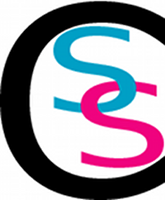University of Illinois at Urbana-Champaign
About ten years ago the Department of Physics at the University of Illinois embarked on a program to systematically reform all of the introductory courses in the calculus-based and algebra-based sequences. We adopted a combination of strategies that include interactive lectures (some based on just-in-time methods), web-based homeworks (including exercises designed to promote concept-based problem solving), and discussion and laboratory sections that feature collaborative learning, all with the intent of actively engaging the students in all aspects of the course.
I will discuss how this reform was initiated and how we have been able to sustain this change over the years. I will focus on one development in this process, the establishment of a physics educating research group, which has become a source of ongoing change in our instruction. In particular, I will discuss our most recent project, the introduction of web-based multimedia learning modules as a prelecture activity which significantly enhances the lecture experience. I will present results on the effects of these prelectures on student performance and perceptions.
Gary Gladding joined the Department of Physics at Illinois as an assistant professor in 1973, after receiving his Ph.D. from Harvard University in 1971. His original research focus was experimental high energy physics. He has done experiments at Fermilab (the first studies of the photoproduction of particles containing the charmed quark), at the Stanford Linear Accelerator Center (the initial detailed studies of particles containing the charmed quark (MARK III collaboration), and experiments measuring the decay of B mesons produced in the decays of the Z0 boson (SLD collaboration)), and at the Wilson Synchrotron Laboratory at Cornell University (detailed studies of charmed meson decays (CLEO II)). His current research focus is physics education (PER). Much of his work has centered on introductory physics curriculum reform. Since 1996, he has led the faculty group responsible for the success of the massive curriculum revision that has transformed the introductory physics curriculum at Illinois. This effort has involved more than 50 faculty and improved physics instruction for more than 25,000 science and engineering undergraduate students. His current research addresses multimedia learning and the development of programs to prepare at-risk students for success in introductory physics.
